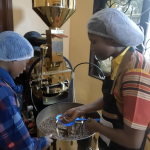Trade between Uganda and Italy is currently in favor of Uganda, with Rome having registered a negative trade balance of 18 million euros as of June 2024. The European country exported only 8.13 million euros and imported 26 million euros. On its part, Uganda is enjoying a significant increase in export receipts from coffee exports, which account for 40%, or over 334,252 million bags.
Now, Italy is engaging with this reality with its best foot forward, focusing on machinery, including agricultural machinery. However, entering the market late, Italy will have to contend with established players like China in Africa’s smallholder farmer model. Samuel Ssettumba has more from the International Agricultural Machinery Exhibition now taking place in Bologna, Italy.
Uganda’s Export Dominance

Recent trade data underscores Uganda’s growing dominance in its economic relationship with Italy. The negative trade balance on Italy’s part highlights Uganda’s strong export performance, particularly in the agricultural sector.
Coffee as a Trade Powerhouse
Accounting for over 40% of exports to Italy, coffee remains Uganda’s biggest foreign exchange earner. The increasing global demand, especially in traditional coffee-consuming nations like Italy, continues to drive growth in this sector and opens new trade opportunities for Ugandan farmers.
Italy’s Strategic Shift
Faced with growing trade deficits, Italy is now pivoting toward exporting high-value goods such as agricultural machinery. Italian manufacturers aim to support Uganda’s agricultural modernization, but they face the challenge of competing with long-established suppliers from China.
China’s early investments and expansive presence in Africa’s agricultural space mean that Italy will need a more strategic and partnership-driven approach to succeed. Smallholder farmers, who form the backbone of Uganda’s agricultural system, are a key target for mechanization programs.
Strengthening Trade Relations
With trade ties deepening, both Uganda and Italy are looking to diversify beyond raw commodity exchange. Machinery, technology transfer, and knowledge-sharing could define the next phase of this growing economic relationship.







